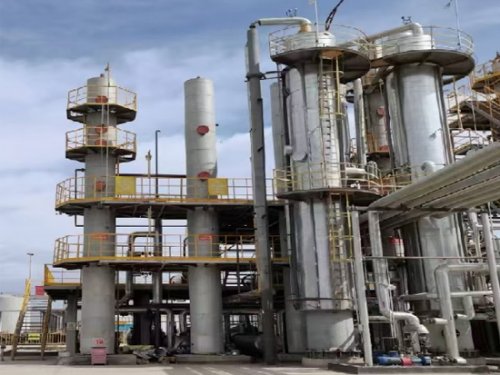
In modern industrial development, diesel desulfurization equipment is of great importance. As global environmental regulations become more stringent, effectively reducing the sulfur content in diesel has become a key concern for refineries and energy companies. This article will explore the working principles of diesel desulfurization equipment and analyze its technical advantages in the market to help businesses make informed investment decisions.

I. Working Principle of Diesel Desulfurization Equipment
Diesel desulfurization equipment is mainly used to remove sulfur compounds from diesel to reduce pollution during combustion. Sulfur in diesel is typically found in forms like mercaptans, sulfides, and hydrogen sulfide. These compounds can produce sulfur dioxide (SO₂) during combustion, a major contributor to air pollution.
Diesel desulfurization equipment removes sulfur compounds through the following steps:
1.Adsorption Desulfurization: Diesel passes through an adsorbent (such as activated carbon or molecular sieves). The adsorbent's surface has many porous structures that effectively capture and adsorb sulfur compounds. This method is primarily used for the pretreatment of low-sulfur diesel.
2.Hydrodesulfurization (HDS): Under high temperature and pressure, diesel reacts with hydrogen over a catalyst, converting sulfur compounds into hydrogen sulfide (H₂S). The hydrogen sulfide is then removed through separation. This method is highly effective for desulfurizing diesel with a high sulfur content.
3.Oxidative Desulfurization: An oxidizing agent is added to the diesel to oxidize sulfur compounds into more easily removable substances, which are then extracted or separated. This method is often used in conjunction with other desulfurization processes to enhance effectiveness.
II. Technical Advantages of Diesel Desulfurization Equipment
1.High Desulfurization Efficiency
Diesel desulfurization equipment can remove over 90% of sulfur content in diesel, meeting strict environmental standards. The hydrodesulfurization technology, in particular, significantly reduces sulfur compounds in diesel due to its high-temperature, high-pressure environment and catalyst effects, ensuring the quality and cleanliness of diesel.
2.Diverse Desulfurization Techniques
Depending on application needs and diesel types, businesses can choose suitable desulfurization processes such as adsorption, hydrogenation, or oxidation. The combination of various desulfurization techniques not only enhances the equipment's efficiency but also minimizes energy consumption and operational costs.
3.Excellent Environmental Performance
Diesel desulfurization equipment is designed with environmental requirements in mind, with many units capable of recycling and reusing hydrogen and other byproducts, reducing resource waste. Additionally, the byproducts generated during the desulfurization process, such as sulfur, can be further processed into industrial materials, achieving resource recycling.
4.High Stability and Automation
Modern diesel desulfurization equipment is often equipped with advanced automation control systems that enable full-process monitoring and management, greatly improving safety and stability. The automation control system also optimizes operating parameters, reducing human errors and enhancing overall production efficiency.
5.Significant Economic Benefits
Although the initial investment in diesel desulfurization equipment is relatively high, the long-term operational benefits are substantial. Efficient desulfurization allows businesses to produce higher-quality diesel that meets international environmental standards, gaining wider market and customer recognition.
III. How to Choose Suitable Diesel Desulfurization Equipment?
1.Determine Production Needs: Choose the most suitable desulfurization technology and equipment based on the raw diesel's characteristics, sulfur content, and required desulfurization level.
2.Evaluate Equipment Performance: When purchasing equipment, focus on desulfurization efficiency, energy consumption, automation level, and maintenance costs.
3.Consider Supplier Reputation: Choose a supplier with rich experience and strong technical capabilities to ensure equipment quality and reliable after-sales service.
IV. Conclusion
Diesel desulfurization equipment is a critical component in the modern refining industry, offering significant advantages in environmental performance, desulfurization efficiency, operational stability, and economic benefits. As environmental regulations continue to tighten, the market demand for diesel desulfurization equipment will keep growing. When choosing equipment, businesses should comprehensively consider their needs and equipment performance to select the best solution for achieving both environmental and economic benefits.
By understanding diesel desulfurization equipment thoroughly and making informed choices, businesses can gain a more competitive position in the market and contribute to sustainable development.



